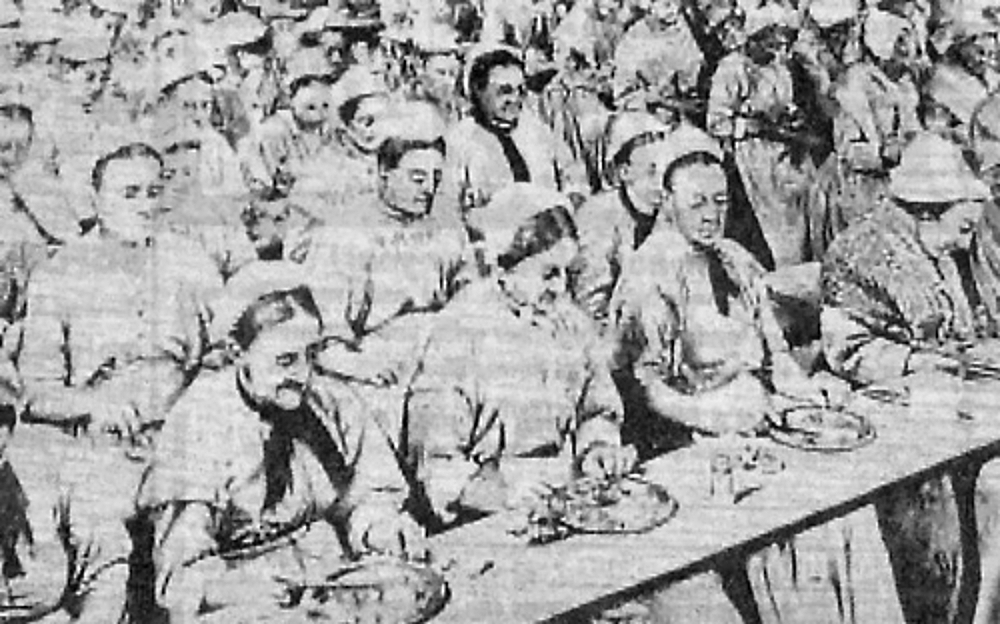The stigma of the workhouse
WHEN young children in the mid-1930s were threatened with `the workhouse’ if they didn’t behave, it could hardly be taken seriously. For the workhouse, as such, had been officially abolished in 1930 and, in any case, it could never be used as a punishment for errant youngsters. Even so, the dreaded word became so feared by the Victorians that it had spilled over into the 20th century as awe-inspiring folk-lore punishment.

In reality the workhouse was in most cases the sole alternative to homeless destitution available to the poor, elderly and homeless until after the First World War and before Social Security and the National Health became dominating factors in our everyday lives.
The workhouse was, by all accounts, a harsh and truly dreadful place to be sent.
Such a stigma had been attached to the local Union Workhouse at East Preston (the `union’ related to one institution catering for several small local towns and parishes) that for decades after it officially ceased to exist many local residents tried to expunge the blight by claiming they lived in Angmering on Sea.
Other than as an implied threat, the workhouse was hardly ever mentioned in polite local Victorian society. In the second half of the 19th century it was administered by a Board of Guardians under the chairmanship of the local MP or a JP and `catered for’ people who were too poor, old or ill to support themselves.
This could have resulted from lack of work during periods of high unemployment or people having no family willing or able to provide care for them when they became elderly or sick.
Unmarried pregnant women were often disowned by their families and the workhouse was the only place they could go during and after the birth of their child.
The operation of workhouses and life inside them varied from area to area but was invariably distressing.
Before 1834, the cost of looking after the poor had been growing more expensive every year. This cost was paid for by the middle and upper classes in each town through their local taxes and there was wide suspicion amongst them that they were paying to poor to be lazy and avoid work.
To allay this, a new Poor Law was introduced in 1834, aimed to `reduce the cost of looking after the poor, prevent scrounging and impose a system which would be the same all over the country.’ Which sounds uncannily like words used by some politicians in recent times!
Conditions inside the workhouse were deliberately harsh, so that only those who desperately needed help would ask for it. The inmates were made to wear a uniform and the diet was monotonous.
Strict rules and regulations had to be followed. Inmates, male and female, young and old, were made to work hard for long hours, often doing unpleasant tasks.
Generally, little about the life led by inmates of the East Preston Union workhouse was known to the outside world and while a number of scandals in other workhouses hit the headlines (yes, even in those days!) it was not until the very last year of Queen Victoria’s reign that East Preston workhouse, too, erupted with accusations about appalling conditions under which the inmates were existing.
These revelations reached the public only when an official inquiry was called for after the sacking of a superintendent nurse. Accusations that medical appliances in the workhouse infirmary were non-existent vied with a report about the lack of any medicines for sick inmates except cough mixture, diarrhoea mixture and quinine.
Witnesses revealed there was `a great shortage of clothing’, that the same papier mache bowls were used for washing hands, feet and dirty dressings (then painted when holes appeared in them); that some men wore a pair of stockings for ten weeks without changing and the same flannel shirt for five or six weeks at a time.
Mouldy bread was being served, nurses were `very irritated’ with patients and it had become `a very common thing’ to see nurses and patients `throwing clothing at each other.’
Some members of the staff `acted insolently’ to others and in any case, the staffing was described by some as `totally inadequate.’
One intriguing revelation during the during the inquiry was that the superintendent nurse was paid a salary of `£40 a year plus £5 in lieu of beer.’
Another was that when the local doctor who also acted as medical officer of the workhouse had been asked by the superintendent nurse for urgent medical necessities and surgical appliances costing a total of only £7 he had reduced the list and supplied only those items he considered `needful.’
He claimed that the receiving ward in the workhouse infirmary was `a warm, comfortable place’ but admitted sheets `were not always supplied to male inmates as they are frequently filthy.’ (it is not clear from the vague records whether this meant the sheets or the inmates). So far as medical supervision was concerned he added that he `never went more than three days without visiting the place.’
Nurse witnesses reported that rooms they slept in had become so filthy they had to clean them with Jeyes Fluid – and that the same man who washed the infirmary’s foul linen also prepared the bread and butter.
On the latter point the medical officer admitted to the inquiry that this complaint had been made to him but added he `could not recall what remark I made at the time.’
In 1930, when workhouses were officially abolished, conditions became more relaxed, though the change from workhouse into Public Assistance Institution meant little more than the abolition of uniforms and a little more freedom for inmates to come and go.
Even when conditions did improve, living in the workhouse was something that would never lose its stigma.